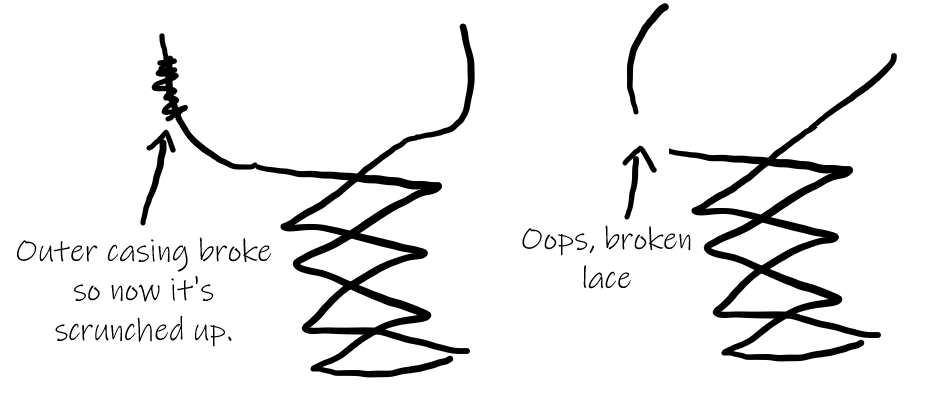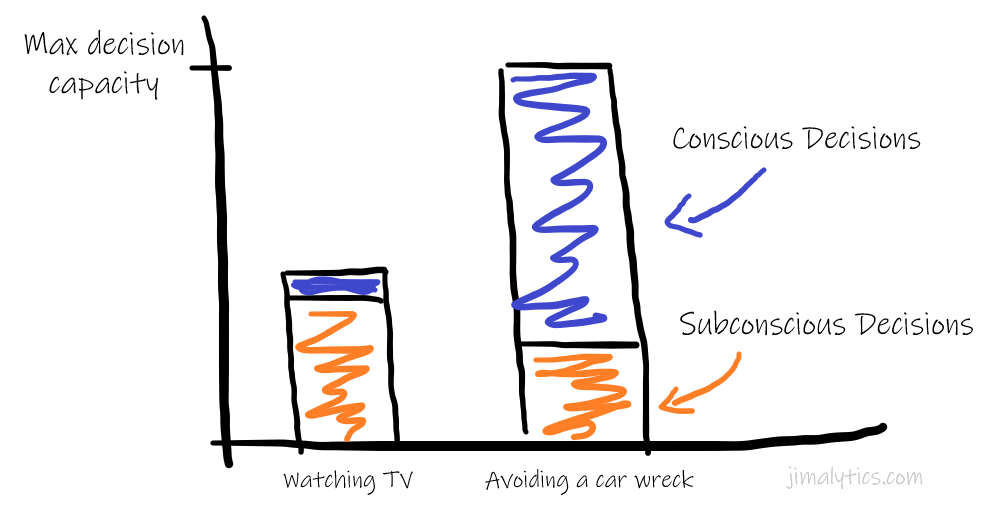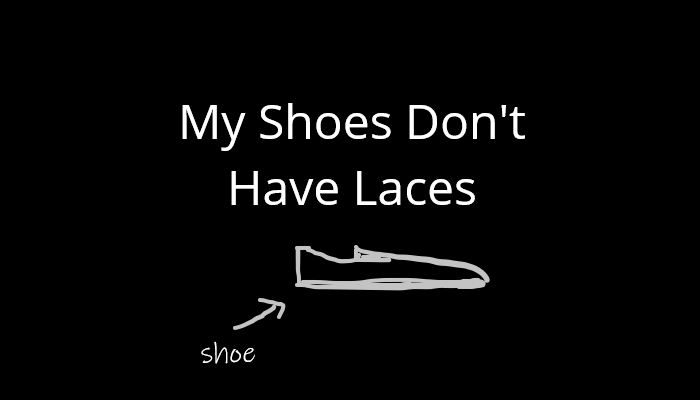The title feels like clickbait, but it’s so ridiculous it could be. So… I don’t wear shoelaces. There are a few exceptions like a few pairs of formal shoes I’ve had in my closet that I wear a few times per year – but every other occasion? Nah. I’ve been working out barefoot for years (at home – I’m not a monster). Going out? I rotate between a few pairs of Vans shoes (love Vans) and sandals during the summer. I liked my shoes tied tight. They kept coming untied and I hated double-knotting because it was extra work to take them off/on. So I’d make the single knot tight and eventually they’d break.
Maybe it was those annoying circle laces that had the outer casing that would break. Or maybe I’d just straight-up tear the lace off. Either way, for ME it was a problem. Even with the tight knots, I’d still find a way to untie them with my feet (maybe I walk funny). So double knots aren’t an option – just annoying… and I am clearly far too aggressive with those laces. Eventually, my subconscious would creep into my consciousness and I’d periodically look down at my shoes to see if they were untied… or I’d have to retie them if I felt like they were coming loose. Okay Jim, who cares?

I want to repeat the important part of this: my subconscious crept into consciousness. Since I obsess over mundane crap like this, I took some time to think about whether this trivial thing is a real problem or a fake problem… and what I concluded changed the way I approached everything. The basis of this “discovery” is this: I only have a finite amount of conscious or unconscious decisions I can make in a day – and this isn’t one I want to spend my time on.
How Subconscious Decisions Impact You
Your brain is incredible. It can do some seriously cool stuff without you knowing it. There’s a really neat study that was done which correlates the amount of decisions one makes when driving and the frequency of accidents. I’m going to criminally misrepresent parts of this study, so here’s a relevant quote from the conclusion:
We found that when the load tasks are added, the proportion of conscious area increases, and the driving operation carried out
by the unconscious area become slower. Also, there are individual differences in the effect on the unconscious area because of
the load task, and the effects due to individual differences must be taken into consideration.
Now tying one’s shoes isn’t nearly the same as driving – but let’s consider that there are thousands of stimuli that muddle around in your subconscious even when you’re not driving. This study refers to subconscious and conscious decisions as a proportion. That doesn’t necessarily mean you’re making MORE decisions when tasks are added (you probably are) – but instead you’re reallocating your brain’s decision-making based on a situation. What happens when you need to make more decisions than your brain can make? Put simply, you might not be able to make that critical decision.

This concept of maximum decision-making is, in part, supported by some experts saying that the mind thinks between 60,000-80,000 thoughts per day. Here’s another article. And another – this one suggests ~30,000. I couldn’t find a link to a credible study (one of you might have one). Honestly, the amount doesn’t really matter. What’s important is we agree that there are a finite amount of decisions one can make within some period of time. That means within a given hour, minute, or second – your effectiveness is held hostage by these decisions. A bit too dramatic? Let’s get practical.
Tying it back to our work
TYING it back? Get it? Shoelaces? Tying? I really shoehorned that one.
Analytics is hard. We’re hired to help a company make informed decisions with data. That’s not easy because there are a lot of variables. There’s your data layer, your tag management implementation, analytics tool configuration, connectors to whatever BI tool you’re using and its entire ETL/ELT/whatever process – lots of stuff that needs to work in harmony. Whether you work in implementation, reporting, or analysis – if you’re reading this, I can guarantee there’s data that’s cooked into your implementation that you wouldn’t serve to your worst enemy.
Maybe your entire implementation is built on a series of inter-dependent JavaScript functions or your data layer just… sucks. You might have acquisition channels classified in a way that requires a permanent footnote in your dashboards. You get the idea. These aren’t things that you go home and talk to your family/friends about – but they all live in your head… and it’s WAY more stuff than you think. At any given moment, your subconscious is considering incalculable decisions with every single data point. You probably see where I’m going with this.
The more capabilities we add to collecting and reporting data, the less capable you are to effectively use it. This manifests itself in a lot of different ways. You’re constantly feel like you’re in a triage. You might have less time to think about how the data impacts the business – even if you literally have the time specifically earmarked for it. Every single shortcut you take is a loan you’ve taken from your subconscious and it adds up until there’s no more space. Then when it’s time to make a critical decision you freeze.
What to do about it
There’s no easy answer here. I struggle with it, too. When I work with clients, I’ll try to find out what keeps them from going on vacation. It’s a simple question that doesn’t literally mean they won’t go on vacation – but they’re worried about something. Some need to triple-check data from their analysts and are worried something could slip through the cracks. Others stay up at night worried that tracking is going to break during a peak season. People will typically hire a consultant after this happens. By then, it’s an uphill battle to erase this from your subconscious. The idea is to get ahead of your subconscious before it becomes a conscious problem.

Most often this is an issue with folks who have been at an organization for several years. There’s an entire history of concerns that haunt them. It’s not that they aren’t significant – most are completely insignificant – but they take up real estate that could be used to do something more productive. Doing something difficult like task-switching becomes harder. Thinking about adding value becomes harder. If you’ve read my past 2 articles you’ll see how this ties in nicely. We’re always at risk of becoming more of a cost center than a profit center (arguably, most analytics teams are a cost center). Maybe start with something simple – like buying shoes without laces. It won’t fix the problem, but you’ll start to see how little things impact your subconscious decision-making and bleed into your ability to make conscious decisions.
Final Thoughts
This impacts everyone – literally everyone. This is decision fatigue. However, every time I talk about decision fatigue it ends up getting written off to the conscious decisions we’re making (like task-switching) and less on the subconscious… which is why I avoided using the term until the end. We tend to focus on the conscious part of this fatigue which is why addressing it can be exceptionally difficult. As a consultant, one of the focuses I have is eliminating the subconscious decision fatigue. If all we focus on is tightening the bolts and adding safeguards then we lose sight of the overall structure. Counter-intuitively, fixing stuff has a real risk of adding to your fatigue.
I think practitioners can be highly effective with switching tasks, but it lives in our immediate consciousness and takes a lot of conscious decisions to do well. That’s why doing something dumb like wearing shoes without shoelaces doesn’t even register on our radar (though your mileage will definitely vary). Fixing bugs and implementing tweaks can be helpful, but you should take some time to consider what might be lingering in your subconscious.
